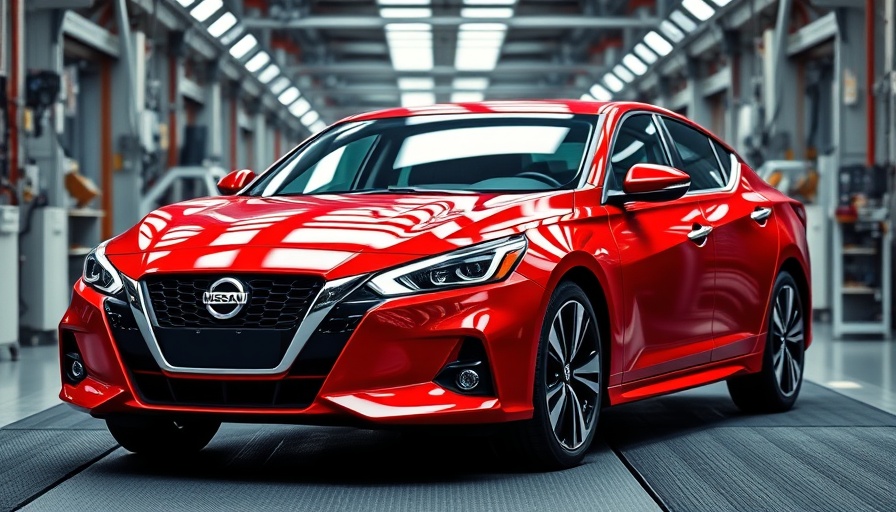
Nissan's Financial Struggles: A Closer Look
Nissan’s recent announcement of potential layoffs has sent shockwaves across the automotive industry, signaling deeper issues within the company. Originally, the automaker planned to cut about 9,000 jobs, but new reports indicate that this number could rise to approximately 20,000, affecting nearly 15 percent of its global workforce. This alarming development is expected to be revealed at Nissan's upcoming fiscal year 2024 earnings presentation, making it one of the most significant workforce reductions in the company's recent history.
Understanding the Financial Landscape
The automotive giant, under the leadership of newly appointed CEO Ivan Espinosa, recently revised its financial outlook, projecting a staggering net loss estimated between 700 and 750 billion yen (about $5.3 billion) for the year. Despite a forecasted revenue of 12.6 trillion yen (roughly $85 billion) with expected global sales of 3.35 million units, Nissan's profitability remains at risk due to aggressive discounting strategies designed to move inventory.
The Role of U.S. Sales in the Bigger Picture
Interestingly, there are mixed signals emerging from Nissan’s U.S. sales performance, which increased by 5.4 percent in 2024. However, this growth came with the trade-off of lower profit margins, as the company implemented substantial sales incentives. Initiatives like the “Nissan One” program, which provides cash bonuses to dealerships that reach volume targets, further illustrate the company’s struggle to maintain profitability while trying to expand market share.
Navigating a Complex Global Market
As the world’s largest automotive manufacturers grapple with evolving market dynamics, Nissan finds itself at a pivotal juncture. The challenges it faces are not unique; indeed, many companies in the largest automobile industry in the world are exploring significant structural changes to remain competitive. Factors such as global tariffs and production costs have become critical areas of concern, and while Nissan does not cite these directly as causes for its troubles, the implications are clear.
Industry Trends and Future Projections
The automotive sector is witnessing unprecedented shifts driven by technological advancements and changing consumer preferences. With electric vehicles gaining traction, the question remains: can Nissan adapt quickly enough to capitalize on these trends? The company’s past focus on larger vehicles and fuel efficiency must now convert into an aggressive strategy in electric mobility if it hopes to remain relevant.
Counterarguments and Diverse Perspectives
While the picture painted is certainly bleak, some experts argue that Nissan still holds significant resources and potential for recovery. The strong brand equity established over decades and ongoing loyalty among consumers could provide a cushion against the ongoing crisis. Industry analysts suggest that a renewed commitment to innovation, alongside operational restructuring, could help Nissan regain its footing.
Challenges and Risks Ahead
The road ahead is fraught with challenges. Instead of solely focusing on job reductions, Nissan could consider investing in training programs for its workforce to pivot towards new technologies. The current layoffs may provide temporary relief in operating costs, but if not coupled with strategic growth initiatives, the company risks creating a talent void that could be hard to replenish.
As Nissan prepares to announce further developments, it remains evident that the health of one of the biggest car companies in the world is dependent on its ability to navigate this turbulent period successfully. Whether their strategies will stabilize operations or plunge them further into darkness is a question that will soon be answered.
Conclusion: Stay Informed
Understanding the dynamics at play within Nissan isn’t just essential for stakeholders; it’s valuable for anyone interested in the automotive industry. As the landscape shifts, staying informed about industry trends, financial health, and corporate strategies is crucial for consumers and professionals alike. Embrace the complexities of the automotive market, because knowledge is power in today’s rapidly evolving economy.
 Add Row
Add Row  Add
Add 




Write A Comment